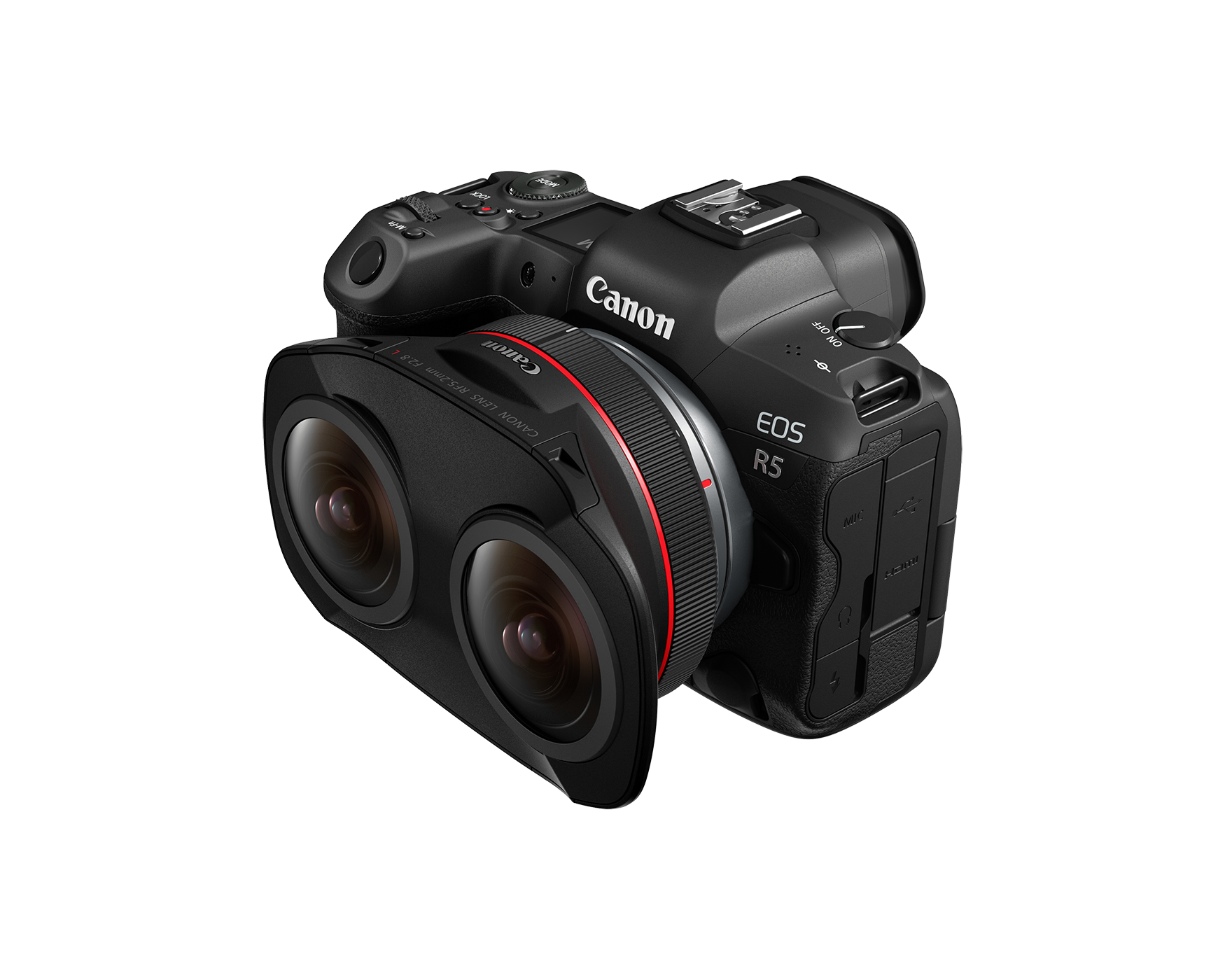Canon Debuts Dual Fisheye Lens For Stereoscopic 3D VR Capture
The RF5.2mm f2.8 L Dual Fisheye lens can shoot stereoscopic 3D 180-degree VR imagery

MELVILLE, N.Y.—Canon has introduced the RF5.2mm f2.8 L Dual Fisheye lens, bringing stereoscopic 3D virtual reality (VR) capture to the EOS R5 camera as part of the EOS VR System.
The digital interchangeable dual fisheye lens is capable of shooting stereoscopic 3D 180-degree VR imagery with a single image sensor, streamlining the complexities of virtual reality production as well as the ability to view content in full capacity, the company said.
To enable viewing the content captured by this system in its truest form, use of compatible VR headset, such as the Oculus Quest 2, enables viewers to immerse themselves in the content by moving their heads, it said.
“At Canon, we innovate so creators can push artistic boundaries, and this commitment to innovation is what led us to introduce the new RF5.2mm F2.8 L Dual Fisheye lens. As Canon’s first entry into the world of virtual reality image capture, the EOS VR System represents an important milestone in our company’s rich history as a lens manufacturer and welcomes a bright future for VR content creation,” said Tatsuro “Tony” Kano, executive vice president and general manager of Canon U.S.A.’s Imaging Technologies & Communications Group. “This new RF lens produces a stunning 8K virtual reality image and sets itself apart through its simplified workflow. Our goal is to make immersive storytelling more accessible for all.”
The new lens features high-quality L-series optics engineered with an interpupillary distance of 60mm for delivery of 3D imagery in VR with natural parallax, closely resembling human vision when viewed through a compatible headset, it said.
With a 190-degree field of view captured from two separate optical systems they deliver outstanding results for 180° VR viewing platforms. With subwavelength coating technology offering impressive flare control in backlit conditions, VR creators can have freedom to shoot regardless the time of day or position of the sun. The dual fisheye design provides versatile exposure control with a maximum aperture of a bright f/2.8 to a deep depth of field of f/16 with electronically controlled apertures allowing the dual fisheye lens to operate just like other RF mount lenses, it said.
Canon’s free Camera Connect app and Canon's EOS Utility program both will be updated in the future to offer remote control live view functionality for monitoring purposes while on-the-go, it said.
The professional video industry's #1 source for news, trends and product and tech information. Sign up below.
The EOS VR System’s workflow is based on recording left and right fisheye images to a single full-frame image sensor. This helps to solve common VR challenges of stitching and syncing, by outputting one single image file. Canon is currently developing two paid subscription-based software solutions as options for completing the post-production process, it said.
The EOS VR Utility will offer the ability to convert clips from dual fisheye image to equirectangular and make quick edits, as well as select the resolution and file format before export. With the EOS VR Plug-In for Adobe Premiere Pro, creators will be able to convert footage automatically to equirectangular and cut, color and add new dimension to stories with Adobe Creative Cloud apps, including Premiere Pro, it said.
Features of the new lens include:
- A close-focusing distance of 7.87-inches/0.2m is possible; max magnification is 0.03x.
- Aperture range of f/2.8 to f/16 with a 7-blade aperture and simultaneous electro-magnetic diaphragm for both left and right lenses.
- Built-in gelatin filter holder, which allows ND gel filters to be used in bright environments if a bright aperture is desired.
- Fluorine coating on the front lens elements, with a dust and water resistant design.
- Extremely compact size, allowing the lens to be used in different types of productions.
The RF5.2mm f2.8 L Dual Fisheye lens is scheduled for December availability and has an estimated retail price of $1,999.
More information is available on the company’s website.
Phil Kurz is a contributing editor to TV Tech. He has written about TV and video technology for more than 30 years and served as editor of three leading industry magazines. He earned a Bachelor of Journalism and a Master’s Degree in Journalism from the University of Missouri-Columbia School of Journalism.

